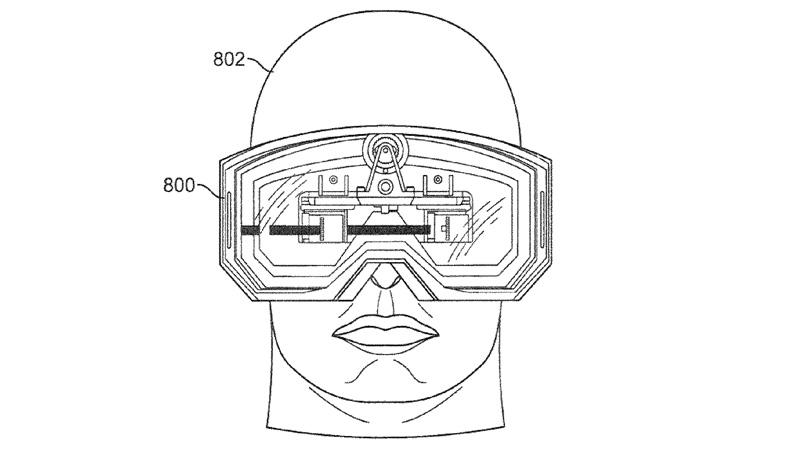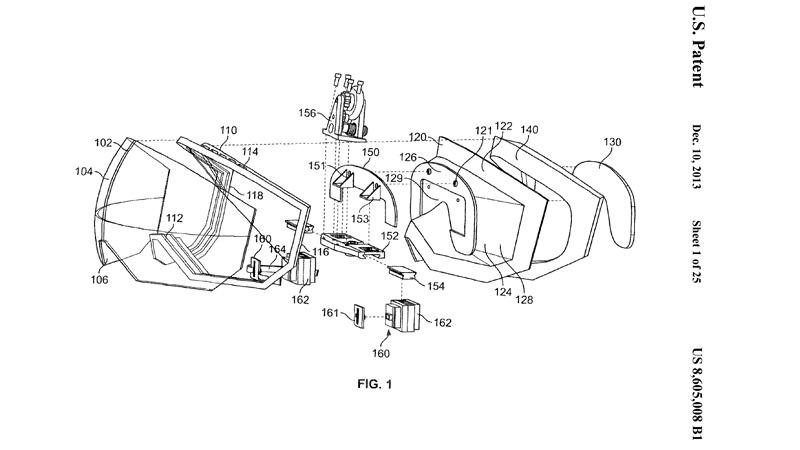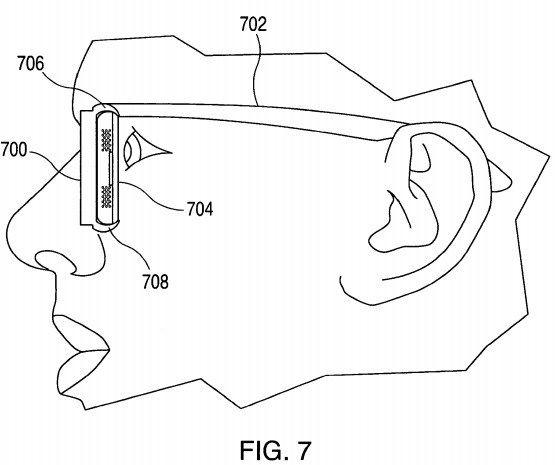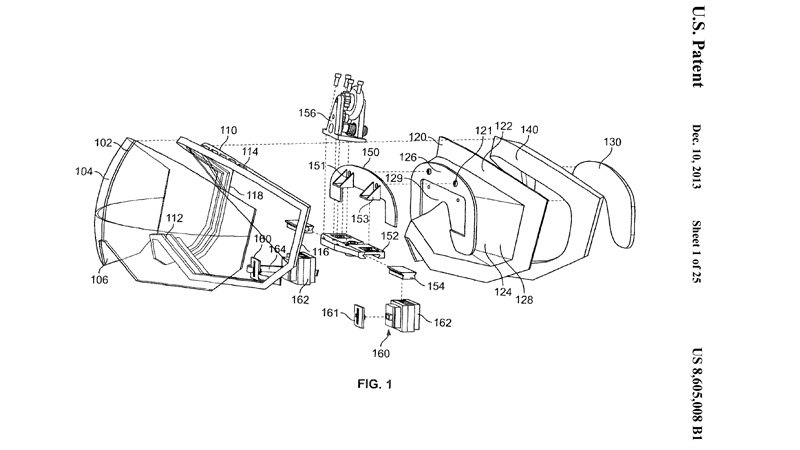VR and mobile seem to go hand-in-hand these days, with a wide range of products such as Samsung’s Gear VR and Google’s DayDream available for Android users – but what about those us with iPhones? Sure, there are third-party mobile viewers that provide a basic VR experience, but it’s nothing compared to what Samsung and Google offer. If Apple can provide high-end AR experiences with ARKit, when will it do the same with VR?
That might change soon. For years, there have been rumours that Apple is developing a VR headset of its own – in fact, there has been a range of VR-related hires, patents and more that suggest something is in the works. In this article, we discuss all the latest Apple VR headset news, release date rumours and acquisition info, as it looks to grow the relevant areas of its business.
If Apple isn’t developing a VR headset then the chances are that it’ll announce an AR headset instead – this is expected to be called Apple Glass, and to launch some time in 2022 or 2023. Alternatively, the company may launch a single headset that somehow combines both VR and AR capabilities.
If you’re a VR fan, you might also be interested in taking a look at our roundup of the best VR apps and games for iPhone.
Apple VR headset release date
Apple’s VR headset is expected to go on sale in 2022.
That’s according to a January 2021 report from Bloomberg, which also provides considerable detail about the project we will discuss later in this article. Bloomberg says the headset, which is codenamed N301, has faced development obstacles, such as issues with weight and size, but is at an advanced stage and could be launched as early as next year.
This timeframe may come as a surprise, however, to those who’ve been keeping an ear out for Apple VR rumours in recent years.
Back in 2018 CNET predicted that Apple would launch a combined AR/VR product in 2020, citing a person familiar with Apple’s plans. And this didn’t seem overly optimistic at the time: a (different) Bloomberg report from November 2017 had suggested Apple would ship a device in early 2020, although that was expected to offer AR capabilities only.
Needless to say neither of these older predictions bore fruit, and it would be forgivable if the reader adopts an attitude of “I’ll believe it when I see it.” This is one of those products that always seems to be launching in 18 months’ time.
What’s the difference between VR and AR?
That question requires a quick refresher on terms, as there’s a little confusion about augmented reality (AR) and virtual reality (VR).
VR headsets are mounted on the head in a similar way to ski goggles, and completely block your view of the outside world. The VR headset tracks your head movement, and the 3D images displayed inside the headset move accordingly. This makes it appear as if you’re wholly inside a 3D ‘virtual’ world.
VR hit the headlines in the 1990s when video games companies such as Sega and Nintendo attempted to create and sell VR products to the publi.
The technology wasn’t ready then, but a more recent attempt dubbed the Oculus Rift created by Oculus VR in 2012 was developed with modern 3D technology and development has been wowing people ever since. Eventually, Facebook bought Oculus VR in 2014 for more than $2bn, and the second-gen VR headset is now available to buy alongside the likes of the HTC Vive, Oculus Go and more. (Our colleagues on Tech Advisor have a roundup of the best VR headsets currently available.)
AR, on the other hand, is where the glasses are see-through and you can still see the world aroun� you, but an image is displayed in front of your eyes.
Apple is known to be a trailblazer, but it’s still part of the Silicon Valley tech industry (albeit a more secretive one). If Google, Facebook and Microsoft are all working on VR and AR products, you can bet your bottom dollar that Apple also has a prototype in its labs.
This definition certainly doesn’t bring us any closer to how Apple could achieve both VR and AR from one device. To understand more, we’ll look at the features of the new device below, but first up, where’s the evidence?
Evidence that Apple is working on a VR headset
Rumours about Apple developing a virtual reality headset have been circulating for years. In fact, rumours started way before news about Apple’s AR glasses started doing the rounds.
Below we will examine the evidence that Apple’s VR interests extend to developing hardware.
Apple hires
Way back to November 2014, Apple posted a job listing for app engineers experienced with 3D graphics, virtual reality and augmented reality. The job posting was quickly removed, but it specifically asked for developers to build “high-performance apps that integrate with Virtual Reality systems for prototyping and user testing.”
Since then, Apple has made a number of relatively high-profile hires for its virtual reality project, including Microsoft’s Nick Thompson, an engineer that worked on the HoloLens audio hardware for three years. Apple also hired Bennett Wilburn, another Microsoft employee, who focused on “machine learning technology for human activity recognition” with his previous experience including the likes of Lytro and Huawei.
Along with ex-Microsoft employees, Apple has also hired Doug Bowman, a man considered to be a leader in the field of 3D user interfaces. His previous experience includes working as a computer science professor at Virginia Tech, as well as being the head of the school’s Center for Human-Computer Interaction. Lastly, we have Graham Myhre, a man that previously worked at Lytro developing specialised lenses and sensors, but is now “investigating new display and optical technologies for future generations of Apple products” – at least that’s what his LinkedIn says anyway.
As first reported by Business Insider, Apple has also hired Zeyu Li, who previously worked at Magic Leap the AR startup. Yury Petrov was also hired, a man who had previously worked on Oculus.
Apple has since made another high-level hire for its AR/VR venture – this time from the company that provided the graphics processor for the iPhone 7. Apple confirmed back in March 2016 that it was interested in buying Imagination Technology, but that never panned out – and it looks like it didn’t really matter, as the company appears to have got what it wanted.
The company has hired several senior employees from the company, with the most notable being ex-Imagination Technology COO John Metcalfe. According to his LinkedIn profile, he has been working at Apple since July 2016, leaving IT after almost 20 years. It’s speculated that Metcalfe and others are working on a new GPU to power the AR/VR experience that Apple is planning, although there’s no new information beyond that.
Apparently, Apple now has a team of several hundred engineers lead by Mike Rockwell, who previously ran engineering at Dolby Labs. According to Bloomberg sources, the team is working on several hardware and software projects under the umbrella codename of T288. The same team worked on ARKit, a tool that lets software developers build AR apps for iPhone and iPad.
VR acquisitions
Apple’s interest in VR has also been signposted by its numerous acquisitions of companies from that sector.
One of Apple’s biggest and most popular acquisitions was back in 2013 when the company bought PrimeSense, the company that developed the original Xbox Kinect, for a whopping $345 million. That’s a huge amount of money to buy a company if you don’t plan to make its technology a big part of your future.
While many assumed that it’d tie in with the Apple TV, and some of the technology ended up being used in the iPhone X for the facial scanning technology that makes Face ID possible, it’s a technology well suited to a VR/AR headset.
Apple acquired Faceshift in November 2015, the company that created the motion-capture technology that was used in Star Wars films. The firm is known for developing software that allows CGI-animated 3D characters to ‘copy’ the facial expressions of the actor. While this probably helped Apple with the Animoji feature of the iPhone X, it could also be linked to a virtual/augmented reality headset.
In August 2017 Apple acquired SensoMotoric Instruments. While it may not be a household name, the German company specialises in eye-tracking technology – in fact, the company was at CES 2017 in Las Vegas showcasing modified HTC Vive and Gear VR headsets equipped with eye-tracking technology. As usual, Apple has confirmed the purchase but didn’t disclose its intentions for its assets, but it speaks volumes about its upcoming VR plans.
Then in November 2017, according to TechCrunch, Apple bought a VR headset startup named Vrvana for roughly $30m. Vrvana makes a headset called Totem which it describes as ‘extended reality’, by which it means a combination of VR and AR.
Most recently, Apple made two VR-related acquisitions in 2020: it bought NextVR (which focuses on broadcasting events in VR) in May 2020, and bought Spaces (which describes its technology as “a bridge between a VR world and Zoom, Skype, Hangouts and more”) in August 2020. Apple hasn’t disclosed the price of either purchase, but experts believe NextVR will have cost around $100m.
VR in macOS High Sierra
Apple has also been paying a lot of attention to VR via its Mac hardware and software. The company put a focus on VR at WWDC 2017 – promoting the ability for developers to develop Metal 2-based VR games (an engine exclusive to Mac, iPhone and iPad) with macOS High Sierra.
At the developer conference, Apple announced that it would be offering support for VR content creation in High Sierra (which launched that September), enabling developers to create immersive gaming, 3D and VR content on the Mac. Fully-fledged VR games for iOS can’t be too far behind right?
Mac developers can use peripherals like the HTC Vive VR headset and apps like Final Cut Pro X, SteamVR, Epic Unreal 4 Editor and Unity Editor to create immersive new worlds.
While not every Mac is capable of supporting VR content, the iMac with Retina 5K display, the new iMac Pro, and any supported Mac paired with an external GPU can.
The support for Macs paired with GPUs was delayed until an update to macOS 10.13 High Sierra came in spring 2018 that added external graphic card support to some Macs. Supported cards include:
- AMD Radeon RX 570
- AMD Radeon RX 580
- AMD Radeon Pro WX 7100
- AMD Radeon RX Vega 56
- AMD Radeon RX Vega 64
- AMD Vega Frontier Edition Air
- AMD Radeon Pro WX 9100
Steam is optimising their SteamVR platform for macOS and enabling connection of the HTC Vive headset and during the WWDC 2017 keynote a representative from Valve went on stage to demonstrate the Star Wars virtual reality demo running on a Mac and using an HTC Vive headset.
Apple is also working to bring the Unity and Unreal 3D game engines to the Mac.
What better way for Apple to showcase its range of Metal 2-based VR games than with its own VR headset…
Apple’s Tim Cook on VR
While people have been speculating that Apple will be making a virtual reality headset for some time, it wasn’t until 2016 that the company officially acknowledged its interest in the VR market. During Apple’s quarterly earnings conference call in January 2016, Apple CEO Tim Cook fielded a question regarding virtual reality. His response? “In terms of VR, I don’t think it’s a niche. It’s really cool and has some interesting applications.“
Okay, so it’s not quite confirmation that the company is actively developing a virtual reality headset, but let’s look at the past. Back in 2014, before the announcement of the updated Apple TV, Tim Cook was quoted saying that TV was an area that Apple had a “great interest in” – a year later, we had a completely new Apple TV boasting its own App Store and gaming capabilities.
Cook also called the idea of smartwatches “interesting” back in 2013, way before the launch of the Apple Watch. So as we said, it’s not confirmation, but it gives us a good idea of what to expect in the (possibly near) future.
Apple employees visit specialist VR lab
If Apple isn’t developing a virtual reality headset, then why has it sent employees to Stanford University’s Virtual Human Interaction Lab several times over the course of three months? As first reported by the Wall Street Journal, Director Jeremy Bailenson made the remark regarding Apple visiting the centre during a Wall Street Journal conference in California.
The Virtual Human Interaction Lab based at Stanford University is the first place that businesses will go before developing a virtual reality headset – Mark Zuckerburg, CEO of Facebook even went along shortly before it acquired Oculus.
Speaking at the event, Bailenson remarked: “Apple hasn’t come to my lab in 13 years – except they’ve come three times in the last three months. They come and they don’t say a word, but there’s a data point for you.”
As ever, Apple is keeping tight-lipped on the subject but this, along with comments made by Tim Cook claiming that VR isn’t a niche and that it has interesting applications suggests that an Apple-branded VR headset is in the works, although it could still be a way away.
Price
We expect the Apple VR headset to cost around $3,000 and be targeted at businesses rather than consumers.
It’s difficult to predict what a VR headset from Apple will cost, and even more so if this rumoured headset combines both AR and VR capabilities. However, you can pretty much guarantee that it will be priced near the top of the market, as Apple’s not in the habit of making budget gadgets.
Looking at the other VR headsets on the market might give us an idea of what to expect.
- The HTC Vive Cosmos costs £579/$699 – buy one here.
- The Oculus Quest 2 starts at £299/$299 – buy one here.
- PlayStation VR costs £259/$299 – buy one here.
At the other end of the AR/VR scale, the Microsoft HoloLens 2 glasses cost $3,000 (approx £2,193), or $5,000 (approx £3,655) for the Commercial Suite which includes enterprise features.
The latest reports suggest that Apple’s offering will be closer in price to HoloLens than to the consumer products above. The Information believes it will cost $3,000 and feature a pair of 8K displays and eye-tracking technology.
If that sounds like overpriced overkill, it may be that Apple isn’t targeting this product at the likes of you: The Information suggests it will be aimed at a business audience, for training, design and sales work, although there may be gaming applications too.
Headset design
We don’t know much about the design of the VR headset, despite claims that there are prototypes already.
A report from the Financial Times in January 2016 claimed that Apple had already successfully developed a virtual reality prototype, and was actively testing it behind closed doors – no doubt by the VR-related hires mentioned above. The FT source didn’t go into detail about what we can expect from Apple’s seemingly upcoming headset, however.
Hopefully the design has come on since this patent was filed in 2007…

Apple’s VR headset: Specs
There are a few rumours circulating that could give an indication of what to expect from Apple’s VR headset.
Display
A CNET report in April 2018 claimed that Apple’s headset will use 8K displays for each eye. This might sound a bit over the top, but apparently the 8K displays will make the VR and AR images look more lifelike and will therefore avoid the nauseous feeling that can be the result of using such headsets.
Processor
The same CNET report suggests that the headset won’t require a computer or smartphone to run.
CNET’s source claimed that the headset will require a dedicated box powered by a custom Apple processor to which it will connect via a “high-speed, short-range wireless technology”. The box will use the wireless technology 60GHz WiGig. While the 60GHz signal cannot typically penetrate walls it can propagate off reflections from walls, ceilings, floors and objects using beam-forming, which could be how the one box is able to determine your location in a room.
By using this technology, users won’t need to install various base stations around a room to enable the headset to determine their location (as is the case with HTC Vive).
According to CNET, the box will feature a 5-nanometer processor. Apple is designing the chip in-house and the chip will be similar to the chips Apple is said to be developing for its Macs, with a switch from Intel planned for 2020.
Software and applications
The new headset will use a new operating system, which Apple is referring to internally as rOS (r for reality). It is based on iOS, according to Bloomberg.
The ‘rOS’ software group is headed by Geoff Stahl, who was previously a software manager for games and graphics at Apple, suggesting that gaming will be a big feature of this headset.
Apple is apparently intending to give the headset its own version of the App Store, where users would be able to download content, according to Bloomberg.
Apple VR headset patents
The most recent VR related patent, discovered in March 2018, is for an ‘IMMERSIVE VIRTUAL DISPLAY’. It shows a person using a combination of VR headsets, controllers and projectors while in a car in order to alleviate motion sickness.
The filing suggests that Apple’s VR system could “provide immersive VR experiences by replacing the view of the real world with virtual environments.”
This VR system will react to motion and use the data to enhance the VR experience, apparently, we assume it means you could be traveling in a car but see scenes that were adapting to the speed of travel, for example.
The patent appears to suggest the technology could be used to alleviate motion sickness – rather than cause it!
This particular patent appears to be linked to Apple’s plans for a self-driving car (a project codenamed Titan) as a way to entertain passengers during long trips. Should the car stop at traffic lights, for example, that would be incorporated into the game (hopefully the zombies won’t catch you).
But Apple’s been filing VR related patents for many years. One such patent dates back to 2007 and suggests that a VR headset could look like ski goggles (as per the picture shown above). “The goggle system may resemble ski or motorcycle goggles. To enhance the user’s comfort, the goggle system may include breathable components, including for example breathable foam that rests against the user’s face, and may allow the user to move the display generation components for alignment with the user’s eyes. In some embodiments, the goggle system may include data processing circuitry operative to adjust left and right images generated by the optical components to display 3-D media or account for a user’s eyesight limitations.”
Back in December 2013, Apple Patent (USPTO 8,605,008) surfaced. This patent described a head-mounted display. The abstract talks about “A goggle system for providing a personal media viewing experience to a user is provided. The goggle system may include an outer cover, a mid-frame, optical components for generating the media display, and a lens on which the generated media displayed is provided to the user.”

Three years later, in October 2016, another Apple patent appeared online depicting the same head-mounted display as above, albeit a more refined version. The accompanying text also gives us a better idea of how the VR headset would work:
“A head-mounted device that is worn on a user’s head and configured to integrate with a cellular telephone that is removable, the head-mounted device comprising: a frame that is configured to physically receive and carry the cellular telephone, wherein the frame places a display screen of the cellular telephone in front of the user’s eyes; and an optical subassembly configured to receive at least one image frame from the display screen of the cellular telephone, wherein the optical subassembly is interposed between the display screen and the user’s eyes.”

It’s interesting to note the likeliness between Apple’s VR headset and a standard pair of glasses, as most VR headsets resemble a ski mask and block out all vision from the sides of your eyes for a more immersive experience. Of course, it’s only a patent and the design is likely to change again before it’s released – whenever that may be.

